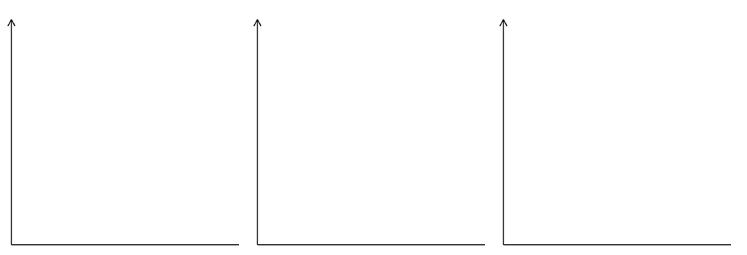Assignment:
Question 1 (Budget Deficit): Assume an economy initially has a balanced budget (tax revenues are equal to the government spending). Marginal propensity to consume (MPC) in this economy is 0.75. For each of the fiscal policies below, first determine how much the GDP changes first and then calculate the resulting change in the government budget (what is the size of resulting surplus or deficit?)
a. Government spending increases by $1000 while taxes stay same.
b. Taxes increase by $1000 while government spending stays same.
Question 2 (International Financial Policy): On the axes provided, illustrate how each event will affect the value of the British pound relative to the value of the U.S. dollar. Don't forget to label the axes and explain your answer (Hint: draw the market for poundsin each case.)

a. Britain's income increases.
b. Britain's price level declines relative to the U.S. price level.
c. Britain's interest rates decline relative to U.S. interest rates.
Question 3 (Exchange Rates): Official exchange rates between the US dollar andthree other currencies are given below. You are also given the following information about the cost of the same basket of goods in the US, Europe, Brazil and Singapore. Calculate the purchasing power parity rates for the dollar against the other currencies. Then state whether the US dollar is overvalued or undervalued against the Euro, BRL and SGD.
Official Exchange Rates:
$1= 0.90 euro
$1= 3.13 Brazilian real (BRL)
$1= 1.39 Singapore dollar (SGD)
|
|
US
|
Europe
|
Brazil
|
Singapore
|
|
Milk
|
$4
|
6 Euros
|
7 BRL
|
4 SGD
|
|
Bread
|
$5
|
3 Euros
|
4 BRL
|
3 SGD
|
|
Cheese
|
$7
|
6 Euros
|
6 BRL
|
4 SGD
|
|
Egg
|
$4
|
4 Euros
|
5 BRL
|
5 SGD
|